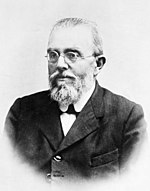Fregenae
240s BC establishments245 BCColoniae (Roman)Destroyed populated placesEtruscan cities ... and 4 more
Etruscan sitesFiumicinoFormer populated places in ItalyFrazioni of the Metropolitan City of Rome Capital

Fregenae (Italian: Fregene) was a maritime town of ancient Etruria, situated between Alsium and the mouth of the Tiber. The modern Fregene is an Italian hamlet (frazione) of Fiumicino, in the Metropolitan City of Rome Capital, Lazio. As of 2012 its population was of 6,445.
Excerpt from the Wikipedia article Fregenae (License: CC BY-SA 3.0, Authors, Images).Fregenae
Piazzale di Fregene,
Geographical coordinates (GPS) Address Nearby Places Show on map
Geographical coordinates (GPS)
| Latitude | Longitude |
|---|---|
| N 41.853055555556 ° | E 12.193333333333 ° |
Address
Piazzale di Fregene
, Fregene
Lazio, Italy
Open on Google Maps








